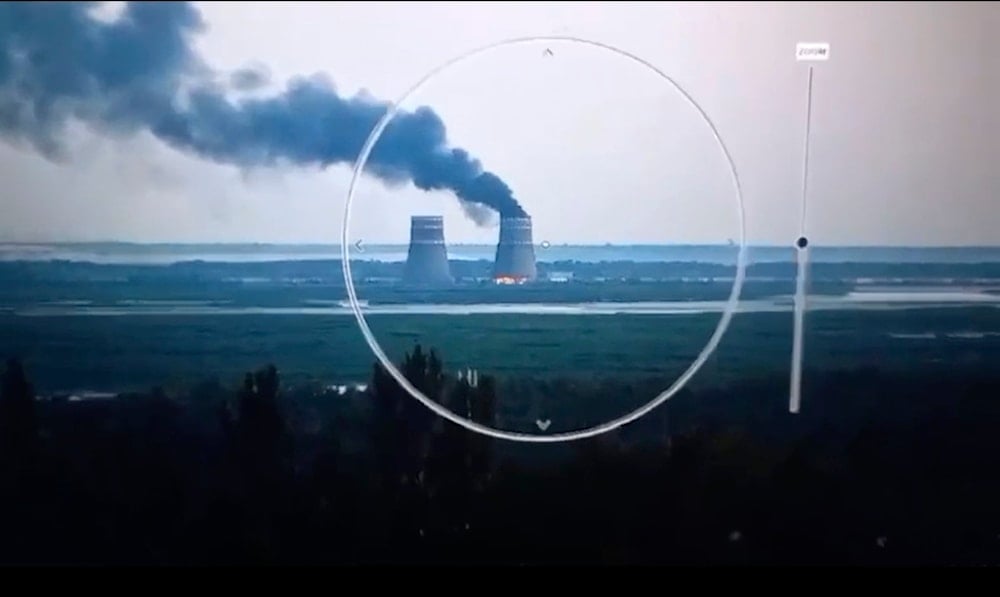EU monitors Zaporozhye fire as tensions rise at Kursk nuclear plant
The EU currently lacks specific information regarding the situation at the Kursk plant.
-

In this image from a surveillance camera provided by the Ukrainian Presidential Press Office, smoke rises from a cooling tower of the Zaporizhzhia Nuclear Power Station in a Russia-controlled area in the Energodar, Zaporizhzhia region of Ukraine, Sunday, Aug. 11, 2024. (Ukrainian Presidential Press Office via AP)
Following the recent fire at the Zaporozhye nuclear power plant (ZNPP), European Commission spokeswoman Arianna Podesta on Tuesday said that the bloc is closely following the situation around the plant and is currently in contact with the International Atomic Energy Agency (IAEA) to monitor developments and ensure the safety and security of the facility.
"We are following the situation [around the ZNPP]. We are in contact with the international agencies that are responsible for monitoring nuclear safety, this is something that we follow very closely," Podesta told a briefing in Brussels.
Meanwhile, the EU lacks specific information regarding the situation at the Kursk plant, according to European Commission energy spokesman Tim McPhie.
The Kursk nuclear power plant is one of the four largest in Russia. he plant has a total of four power units, of which only two are still generating electricity — units 3 and 4, which between them have a capacity of 2,000 MW. pic.twitter.com/4SmplomjK0
— Novaya Gazeta Europe (@novayagazeta_en) August 13, 2024
On Sunday, Rosatom reported that the ZNPP's cooling tower was seriously damaged as a result of two direct strikes from Ukrainian drones. The IAEA reported that the fire did not compromise the plant's nuclear safety but refrained from identifying the cause of the fire.
Last week, Rosatom CEO Alexei Likhachev stated that the situation around the Kursk nuclear power plant had significantly worsened following the Ukrainian attack on the Kursk Region. He added that there is a real threat of strikes and provocations by the Ukrainian armed forces targeting the plant.
Read more: Ukrainian drone attack 'seriously' damaged Zaporozhye NPP
An analysis by the Wall Street Journal on Monday argued that Ukraine is now faced with a strategic dilemma since the incursion: whether or not to continue pushing for gains in Kursk, which requires troops and resources desperately needed on the eastern front.
Ukrainian President Volodymyr Zelensky described the operation as a way to "push the war onto the aggressor’s territory," but while the initial successes are impressive, sustaining this effort could strain Ukraine’s limited manpower in the eastern front.
Despite some early victories, such as disrupting Russian communications, the operation’s long-term impact remains uncertain, with fears of a harsh Russian retaliation.

 2 Min Read
2 Min Read











